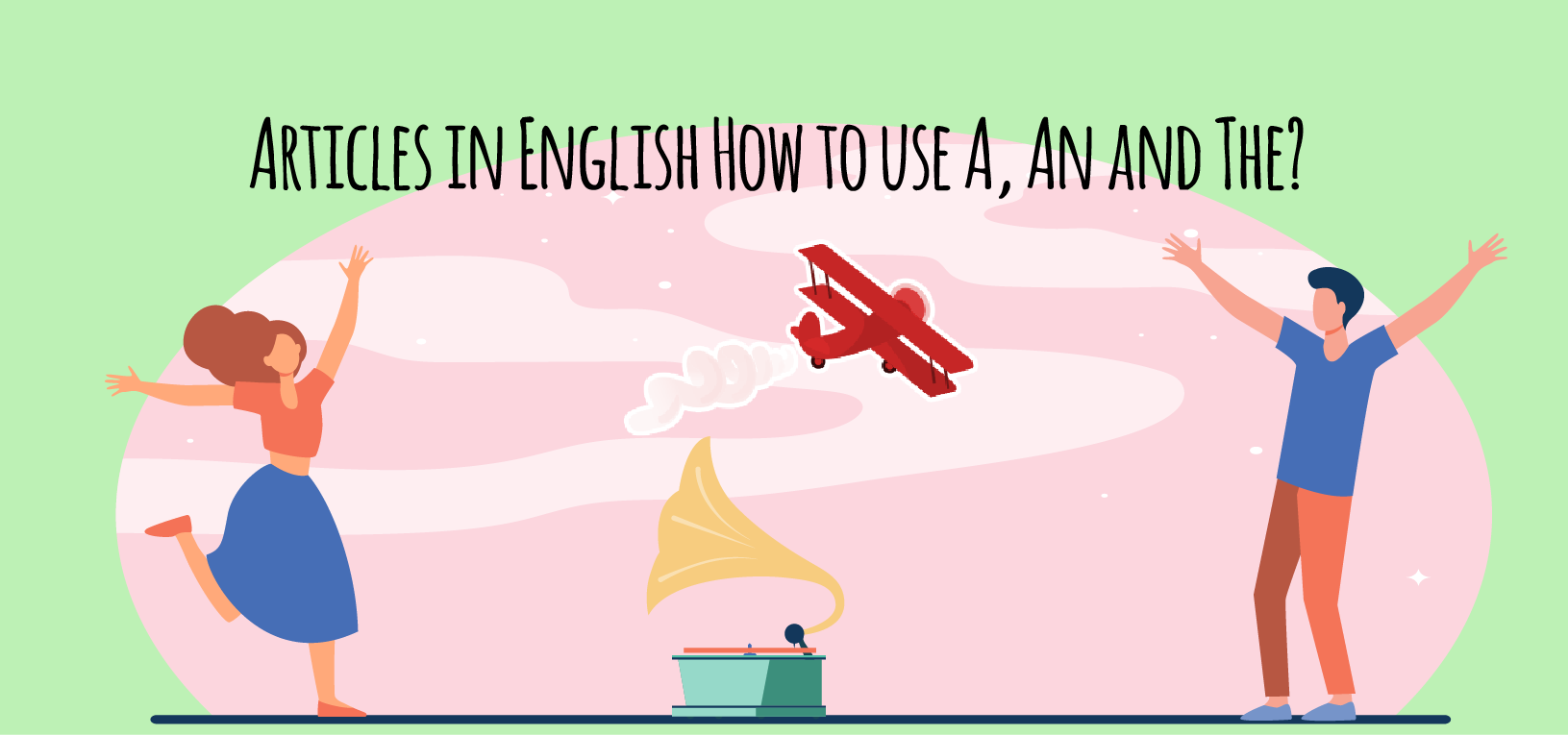Articles in English. How to use A, An and The?

Articles in English How to use A, An and The?
Although it may not seem like it, the use of articles like “a,” “an,” and “the” is perhaps one of the most difficult aspects of writing in English . But we should not be surprised by this, as they differ in languages and that is why they have different rules. Some languages like Russian do not have articles.
In English the rules at first seem quite confusing and even for the English themselves. However, its use is very important, because it is actually what makes an essay look natural. In this article we will explain when it is necessary to use an article and when it is not, because sometimes it is used when it is not necessary
“The” versus “A” / “An”
English only has a certain article the word “the” , perhaps the most common in the English language. The applies equally to singular, plural, masculine, feminine, and neuter nouns. A general rule that exists in English is that names are preceded by the definite article “the” when it is assumed that our interlocutor already knows what we are referring to. There are several reasons why.
A good rule of thumb is to ask if the name being modified is the only one of its kind or if there is more than one form / case. If it is the only one of its kind or you are referring to only one specific example, use “the”: He went to the bookstore to buy the book (Él fue a la librería para comprar el libro)
Articles in titles:
Articles typically do not appear in the headings , headings sections, and figure legends. “the target was very well calculated with effect ” (el objetivo estaba muy bien calculado con efecto)(must include ‘the’ because specific result is mentioned.)
- However, if the objective was one more, as we see in the following example, “a” is used:
A standard genome sequencing protocol was used to identify an exciting new species of Escherichia . (The protocol used was one of multiple sequencing protocols available, and other Escherichia species have already been identified).
Other times to use ‘the’ (and times it is NOT used)
If you are referring to a noun as representative of each case / individual (eg a general discussion), it is advisable to use ‘the’ with the singular form of the noun . “The” is used primarily in academic writing when referring to machines, animals, and bodily organs.
- the computer has allowed working from home. (El ordenador ha permitido trabajar desde casa)
- the dog is considered one of the most faithful animals to man. (El perro es considerado uno de los animales mas fieles al hombre)
- The lung contains over 300 million alveoli. (El pulmón contiene más de 300 millones de alvéolos).
Pay attention : It is usually more common to use the plural form of the name in cases like these, but remember to omit the article. (Lungs contain more than 300 million alveoli)
But, it is not all nouns that need an article when used in this general way. For example, total nouns (or uncountable nouns), which refer to abstract or uncountable things, do not need an article:
- Rain is measured with the rain gauge (la lluvia se ,ide con el pluviómetro)
- Knowledge does not take place. (Pero: the knowledge provided him a good job) (requiere un artículo debido a que se está haciendo referencia a un entendimiento específico.)
Most proper names (such as names of countries or people) do not require an article either:
- Tesla was one of the greatest inventors of all time. (Tesla fue uno de los mayores inventores de todos los tiempos)
- The samples were collected in Hebei Province. (Las muestras se recolectaron en la provincia de Hebei).
Collective proper names are an exception :
- the Middle East and the Great Lakes (el Medio Oriente y los Grandes Lagos)
Also if a person’s name is part of a theory, proof, etc., then it may be more natural to use “the” for example, “the Doppler effect” or “the Riemann hypothesis” (the hypothesis Riemann). However, you should not use “the” if the noun is possessive (eg Tukey’s test, Riemann’s hypothesis .)
“A” versus “An”
In Spanish it has indefinite (or indeterminate) masculine (un, unas) and feminine (una, unas) articles. In English, however, there are only two indefinite articles A and AN, both of which mean “one”, “one”, for example, a chair (una silla), an apple (una manzana).
The indeterminate or indefinite article in the English language is known as A and AN, and its meaning can be translated as UN and UNA. … Both articles mean the same and are invariable in gender and number, since it is used for both masculine and feminine and lacks plural.
When a word begins with consonant sounds that begin with consonant sounds, use “A” in front: ” a door ” (una puerta) or ” a model ” (un modelo), even if the consonant sound is made by means of a vowel ” A unit ” (una unidad). In contrast, “an” is used before words that begin with vowel sounds “an equation ” (una ecuación) or ” an element ” (un elemento), even if the word begins with a silent consonant ” an hour ” (una hora).
Last but not least, we leave you the number 1 online platform for registration of official language exams.




Me gustaría que estuviera en español también la pagina
Hola Antonia, la página web está disponible también en español. Te paso el enlace: https://elblogdeidiomas.es/
Un saludo 🙂